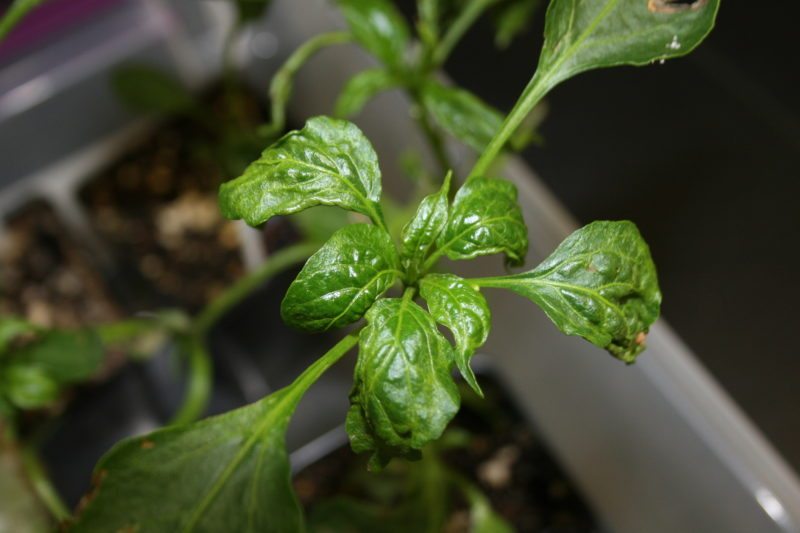
Dealing with Broad Mite
Answer: Broad mite (Polyphagotarsonemus latus) adults are approximately 0.25 mm long, oval shaped, shiny and amber to dark green in color (Figure 1). Broad mite has four life stages including: egg, larva, nymph and adult. Females can lay up to 40 eggs during their two-week life span.
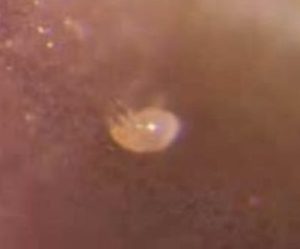
In general, broad mites aggregate in groups, feeding primarily on leaf undersides and flowers where females lay eggs. They feed on plant cells within the leaf epidermis using their piercing-sucking mouthparts. Broad mite feeding causes leaf bronzing, leaf margins to curl downward and become brittle, and puckered and shriveled growth (Figure 2). Extensive populations of broad mites will lead to individuals migrating and feeding on the leaf upper surface, resulting in severe leaf distortion. Broad mite feeding damages the meristematic plant tissues associated with the growing tip or apical shoot, which inhibits growth; decreases leaf number, leaf size and area; and reduces plant height. In addition, leaves may appear “roughened” and darker green than normal. Your options for management include sanitation, miticides and biological control.
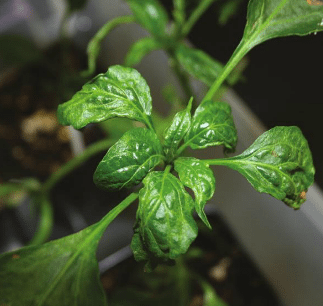
First of all, immediately dispose of all plants confirmed to be infested with broad mites. In addition to discarding those plants displaying damage symptoms, be sure to remove plants adjacent to infested plants because these plants, although not exhibiting symptoms, may be infested.
There are a number of miticides registered for use against broad mite including: abamectin (Avid), bifenazate + abamectin (Sirocco), chlorfenapyr (Pylon), fenpyroximate (Akari), pyridaben (Sanmite), spiromesifen (Judo) and spirotetramat (Kontos). Miticides with translaminar activity such as abamectin (Avid), bifenazate + abamectin (Sirocco), chlorfenapyr (Pylon), spiromesfen (Judo) and spirotetramat (Kontos) may be more effective because the material penetrates leaf tissues and new terminal growth, forming a reservoir of active ingredient within the leaf or new growing points. Therefore, these miticides are likely to contact broad mites feeding within the meristematic tissues.
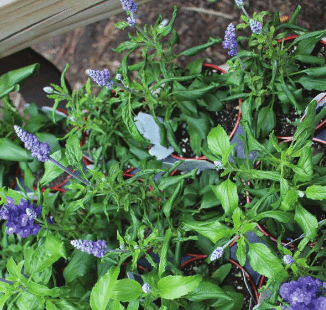
Biological control of broad mite involves preventative releases of the predatory mites, Neoseiulus cucumeris and N. californicus. It is critical to apply these predatory mites early on in the crop production cycle before broad mite populations become established. Consult a biological control supplier to determine the appropriate release rates.
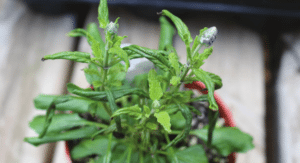
In March, we found broad mite damage on sage (Saliva spp.) plants (Figure 3). The plants displayed typical symptoms of broad mite feeding — distorted growth (Figure 4). The greenhouse producer did not know what was causing the problem because broad mites are so small (microscopic). However, the damage symptoms were random or clumped — not uniform, which indicated an insect, mite or disease problem. Once the plant material was examined under a microscope, we could clearly see the eggs (with bumps) and adult mites located on the leaf underside. So, in order to correctly identify a problem such as broad mite, it is important to verify using a dissecting microscope.
Raymond A. Cloyd is professor and extension specialist in horticultural entomology/plant protection at Kansas State University. He can be reached at rcloyd@ksu.edu.


 Video Library
Video Library 




















